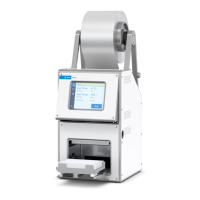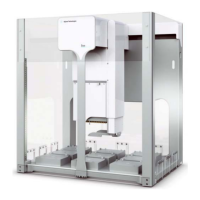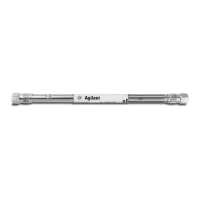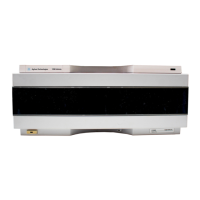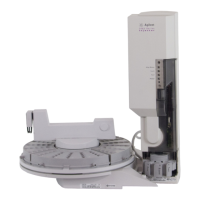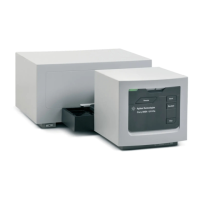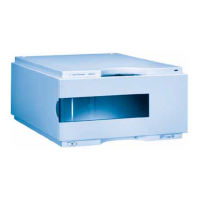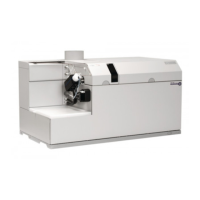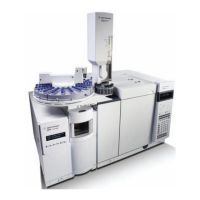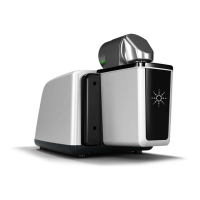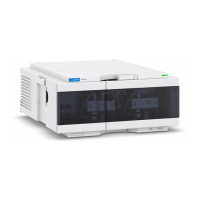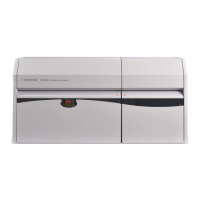
Do you have a question about the Agilent Technologies PL-GPC 220 and is the answer not in the manual?
| Type | Gel Permeation Chromatography System |
|---|---|
| Brand | Agilent Technologies |
| Model | PL-GPC 220 |
| Temperature Range | Ambient to 220 °C |
| Software | Agilent GPC/SEC software |
| Flow Rate | 0.01 to 10 mL/min |
| Detector Options | Refractive Index, Light Scattering |
| Sample Capacity | Up to 120 samples |
| Column Compatibility | Suitable for a wide range of GPC/SEC columns |
Provides a general overview of the Agilent PL-GPC 220 system.
Details the instrument's architecture and basic operational principles.
Specifies the environmental and physical space requirements for the instrument.
Lists the physical dimensions, weight, and operating conditions of the instrument.
Details the key performance parameters and specifications of the PL-GPC 220 system.
Provides step-by-step instructions for safely unpacking the PL-GPC 220.
Guidance on handling and reporting shipments with external damage.
Explains the software interface for controlling and monitoring the instrument.
Describes the instrument's operational modes: STANDBY, IDLE, and RUN.
Details how to manually control the pump's flow rate.
Information on autozero and purge functions for the Refractive Index detector.
Explains how to start, stop, and configure the autosampler.
How to use editors to set up instrument modules and parameters.
Covers creating, saving, and recalling instrument methods and parameters.
Explains password protection and access rights for instrument control.
Procedure for changing the system password to enhance security.
Tool for estimating run time and solvent consumption for planned analyses.
Displays key instrument parameters and operational status.
Information on linking to external data acquisition software packages.
Step-by-step guide to starting and configuring the instrument for operation.
Initial power-on and system initialization sequence.
Procedure for flushing the system with the required chromatography solvent.
Instructions and steps for running analyses on the instrument.
Procedure for replacing chromatography columns in the instrument.
How to change the mobile phase solvent used in the system.
Steps to replace the injection loop with a different size.
Detailed steps for setting up sequences and running samples.
Configuration of the automated sample run sequence parameters.
Instructions for physically loading sample and rinse vials into the autosampler carousel.
Information on using the diagnostic utility to check sensor status and instrument health.
Provides general guidance for identifying and resolving common operational issues.
Solutions for issues encountered during instrument startup or initialization.
Specific troubleshooting steps for autosampler-related issues.
Solutions for problems related to the Refractive Index detector.
Troubleshooting steps for issues with oven temperature regulation.
Troubleshooting common issues encountered with the solvent module.
Troubleshooting steps for issues related to the pump system.
Resolving issues affecting the quality of the chromatographic separation.
Explains error categories (Warnings, Errors) and the error handling dialog.
Detailed table of error messages, conditions, response times, and default modes.
General advice on periodic instrument inspection and preventative maintenance.
Safety warnings and precautions specific to maintenance procedures.
Instructions for cleaning the exterior of the instrument.
Procedures for cleaning up solvent spills and decontaminating the instrument.
Procedures for testing the overtemperature protection systems of instrument modules.
Test procedure for verifying the oven's overtemperature protection functionality.
Test procedure for verifying the autosampler's overtemperature protection.
Test procedure for verifying the solvent module's overtemperature protection.
Procedures for testing vapor sensors in the oven and solvent modules.
Specific test for the solvent module's vapor sensor.
Specific test for the oven's vapor sensor.
Procedures for testing the liquid level sensing float switches.
Test for the safety interlock switch on the oven door.
Description of the laser interlock switch function in the light scattering detector.
Information and reference for testing the online degassing unit.
Information regarding the Back Pressure Regulator (BPR) and its function.
Step-by-step instructions for replacing the Back Pressure Regulator.
Information on maintenance procedures for the DRI detector.
Procedure for purging the DRI detector cell with fresh solvent.
Steps to flush the DRI cell using a suitable cleaning agent.
General maintenance recommendations for ensuring optimal autosampler performance.
Procedure for lubricating the autosampler syringe assembly.
Instructions for cleaning the condensing chamber.
Procedure for lubricating the autosampler carousel track.
Steps for removing, cleaning, and replacing the autosampler needle.
Lists common replacement parts and their part numbers.
Lists spare parts specifically available for the pump module.
Provides essential safety precautions and explains safety symbols.
Information regarding the instrument's compliance with international safety standards.
Safety considerations that must be observed during instrument operation.
Important warnings and precautions for safe instrument use and handling.
Information regarding WEEE compliance and proper product disposal.
Details on radio interference, screening, and EMC regulations.
Information on the product's sound emission levels and standards.
Information on how to access Agilent's website for products and services.
